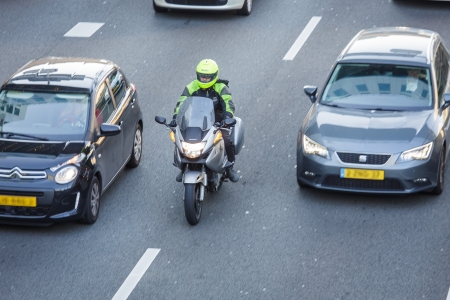Hieronder vindt u de lijst met referenties die in deze factsheet zijn gebruikt. Op ons kennisportaal vindt u in de Themadossiers meer literatuur over dit onderwerp.
[1]. CBS (2015). Verkeersprestatie Kilometrage Motorfietsen. Persoonlijke communicatie. Centraal Bureau voor de Statistiek CBS, Den Haag.
[2]. DaCoTa (2012). Powered Two Wheelers. Deliverable 4.8n of the EC FP7 project DaCoTa. European Commission, Brussels.
[3]. Ministerie van IenM (2012). Vragen en antwoorden over derde Europese rijbewijsrichtlijn. Ministerie van Infrastructuur en Milieu, Den Haag.
[4]. Sexton, B., Baughan, C., Elliott, M. & Maycock, G. (2004). The accident risk of motorcyclists; Prepared for the Department for Transport, Road Safety Division. Report No. 607. TRL, Crowthorne, UK.
[5]. Chung, Y.-S. & Wong, J.-T. (2012). Beyond general behavioral theories: Structural discrepancy in young motorcyclist's risky driving behavior and its policy implications. In: Accident Analysis & Prevention, vol. 49, p. 165-176.
[6]. Wong, J.-T., Chung, Y.-S. & Huang, S.-H. (2010). Determinants behind young motorcyclists’ risky riding behavior. In: Accident Analysis & Prevention, vol. 42, nr. 1, p. 275-281.
[7]. BRON (2016). Bestand geRegistreerde Ongevallen in Nederland. Ministerie van Infrastructuur en Milieu, Den Haag.
[8]. LMR/LBZ (2016). Landelijke Basisregistratie Ziekenhuiszorg. Dutch Hospital Data (DHD).
[9]. OECD/ITF (2015). Improving safety for motorcycle, scooter and moped riders . OECD Publishing, Paris.
[10]. Langley, J., Mullin, B., Jackson, R. & Norton, R. (2000). Motorcycle engine size and risk of moderate to fatal injury from a motorcycle crash. In: Accident Analysis & Prevention, vol. 32, nr. 5, p. 659-663.
[11]. Teoh, E.R. & Campbell, M. (2010). Role of motorcycle type in fatal motorcycle crashes. In: Journal of Safety Research, vol. 41, nr. 6, p. 507-512.
[12]. Chorlton, K., Conner, M. & Jamson, S. (2012). Identifying the psychological determinants of risky riding: An application of an extended Theory of Planned Behaviour. In: Accident Analysis & Prevention, vol. 49, p. 142-153.
[13]. Chen, C.-F. & Chen, C.-W. (2011). Speeding for fun? Exploring the speeding behavior of riders of heavy motorcycles using the theory of planned behavior and psychological flow theory. In: Accident Analysis & Prevention, vol. 43, nr. 3, p. 983-990.
[14]. Savolainen, P. & Mannering, F. (2007). Effectiveness of motorcycle training and motorcyclists' risk-taking behavior . In: Transportation Research Record: Journal of the Transportation Research Board, nr. 2031, p. 52-58.
[15]. Assing, K. (2002). Schwerpunkte der Unfälle von Motorradfahrern. In: Safety environment future IV : proceedings of the 4th International Motorcycle Conference. Volume 10, 16-17 September 2002, München, München, IfZ Forschungshefte Zweiradsicherheit, p. 41-53.
[16]. MAIDS (2004). Motorcycle Accident In-Depth Study MAIDS: In-depth investigations of accidents involving powered two wheelers. Final report. ACEM - Association des Constructeurs Européens de Motocycle, Brussels.
[17]. MAIDS (2009). Motorcycle Accident In-Depth Study MAIDS: In-depth investigations of accidents involving powered two wheelers: Final report 2.0 . ACEM - Association des Constructeurs Européens de Motocycle (The Motorcycle Industry in Europe), Brussels.
[18]. Crundall, D., Crundall, E., Clarke, D. & Shahar, A. (2012). Why do car drivers fail to give way to motorcycles at T-junctions? In: Accident Analysis & Prevention, vol. 44, nr. 1, p. 88-96.
[19]. Craen, S. de, Doumen, M., Bos, N. & Norden, Y. van (2011). The roles of motorcyclists and car drivers in conspicuity-related motorcycle crashes. R-2011-25. SWOV, Leidschendam.
[20]. Craen, S. de, Doumen, M.J.A. & Norden, Y. van (2014). A different perspective on conspicuity related motorcycle crashes. In: Accident Analysis & Prevention vol. 63, nr. 0, p. 133-137.
[21]. Walton, D. & Buchanan, J. (2012). Motorcycle and scooter speeds approaching urban intersections . In: Accident Analysis & Prevention, vol. 48, p. 335-340.
[22]. NHTSA (2013). Traffic Safety Facts: Motorcycles – 2011 Data . US Department of Transportation, Washington, D.C.
[23]. Kooijman, J.D.G. & Schwab, A.L. (2011). A review on handling aspects in bicycle and motorcycle control. Paper gepresenteerd op Proceedings of the ASME 2011 International Design Engineering Technical Conferences & Computers and Information in Engineering Conference, August 28-31, 2011, Washington DC, USA.
[24]. Janse, J., Talens, H. & Kengen, B. (2012). Een motorrijder verdient ook veilige infrastructuur . Paper gepresenteerd op Nationaal Verkeerskunde Congres, 31 Oktober 2012, 's-Hertogenbosch.
[25]. Nombela, M., Davila, A., Alba, J.J. & de Miguel, J.L. (2010). Innovative concepts for Smart Road Restraint Systems to provide greater safety for vulnerable users - Smart RRS. Technical paper, SAE International.
[26]. Rizzi, M., Strandroth, J., Sternlund, S., Tingvall, C., et al. (2012). Motorcycle crashes into road barriers: the role of stability and different types of barriers for injury outcome. Paper IRC-12-41. In: IRCOBI Conference 2012.
[27]. Craen, S. de, Bos, Y.R., Duijvenvoorde, K. van, Norden, Y. van, et al. (2013). De veiligheid van gemotoriseerde tweewielers in Nederland; enkele actuele aandachtspunten uitgelicht. SWOV, Den Haag.
[28]. Crundall, D., Bibby, P., Clarke, D., Ward, P., et al. (2008). Car drivers’ attitudes towards motorcyclists: A survey . In: Accident Analysis & Prevention, vol. 40, nr. 3, p. 983-993.
[29]. Allen, T., Newstead, S., Lenné, M.G., McClure, R., et al. (2017). Contributing factors to motorcycle injury crashes in Victoria, Australia. In: Transportation Research Part F: Traffic Psychology and Behaviour, vol. 45, p. 157-168.
[30]. Gershon, P. & Shinar, D. (2013). Increasing motorcycles attention and search conspicuity by using Alternating-Blinking Lights System (ABLS). In: Accident Analysis & Prevention, vol. 50, p. 801-810.
[31]. Gershon, P., Ben-Asher, N. & Shinar, D. (2012). Attention and search conspicuity of motorcycles as a function of their visual context. In: Accident Analysis & Prevention, vol. 44, nr. 1, p. 97-103.
[32]. Rößger, L., Hagen, K., Krzywinski, J. & Schlag, B. (2012). Recognisability of different configurations of front lights on motorcycles. In: Accident Analysis & Prevention, vol. 44, nr. 1, p. 82-87.
[33]. Liu, B.C., Ivers, R., Norton, R., Boufous, S., et al. (2008). Helmets for preventing injury in motorcycle riders. In: Cochrane Database of Systematic Reviews 2008.
[34]. KNMV (2013). Hoofdletsels en Motorhelmen. Presentatie geraadpleegd 13 april 2017 op https://prezi.com/o60j5iffe0aa/hoofdletsels-en-motorhelmen/
[35]. De Rome, L., Stanford, G. & Wood, B. (2003). Motorcycle protective clothing . In: Proceedings of the Road Safety Research, Policing and Education Conference, 24-26 September 2003, Sydney. p. 24-26.
[36]. Boele, M.J. & Craen, S. de (2014). Langetermijneffecten van een eendaagse voortgezette rijopleiding voor motorrijders. R-2014-22A. SWOV, Den Haag.
[37]. Kardamanidis, K., Martiniuk, A., Ivers, R.Q., Stevenson, M.R., et al. (2010). Motorcycle rider training for the prevention of road traffic crashes. In: The Cochrane Database of Systematic Reviews, 2010, Issue 10, Art. No.: CD005240.
[38]. Boele, M.J. & Craen, S. de (2014). Evaluatie voortgezette rijopleiding voor motorrijders; Motorrijders rijden veiliger na training. R-2014-22. SWOV, Den Haag.
[39]. Rizzi, M., Strandroth, J., Kullgren, A., Tingvall, C., et al. (2015). Effectiveness of motorcycle Antilock Braking Systems (ABS) in reducing crashes, the first cross-national study. In: Traffic Injury Prevention, vol. 16, nr. 2, p. 177-183.
[40]. Teoh, E.R. (2010). Effectiveness of antilock braking systems in reducing motorcycle fatal crash rates. Insurance Institute for Highway Safety IIHS, Arlington, VA.
[41]. Seiniger, P., Schröter, K. & Gail, J. (2012). Perspectives for motorcycle stability control systems. In: Accident Analysis & Prevention, vol. 44, nr. 1, p. 74-81.
[42]. Basch, N., Moore, M. & Hellinga, L. (2015). Evaluation of motorcycle Antilock Braking Systems. In: 24th International Technical Conference on the Enhanced Safety of Vehicles (ESV), 8-11 June 2015, Gothenburg, Sweden.
[43]. Bayly, M., Regan, M.A. & Hosking, S.G. (2006). Intelligent transport systems and motorcycle safety. MUARC Report; No. 260 . Monash University Accident Research Centre MUARC. Clayton, Victoria.
[44]. Huth, V., Biral, F., Martín, Ó. & Lot, R. (2012). Comparison of two warning concepts of an intelligent Curve Warning system for motorcyclists in a simulator study. In: Accident Analysis & Prevention, vol. 44, nr. 1, p. 118-125.
[45]. Martinez, F.J., Toh, C.-K., Cano, J.-C., Calafate, C.T., et al. (2010). Emergency services in future intelligent transportation systems based on vehicular communication networks. In: IEEE Intelligent Transportation Systems Magazine, vol. 2, nr. 2, p. 6-20.
[46]. Nes, C.N. van & Duivenvoorden, C.W.A.E. (2017). Veilig naar het verkeer van de toekomst. Nieuwe mogelijkheden, risico's en onderzoeksagenda voor de verkeersveiligheid bij automatisering van het verkeerssysteem. R-2017-2. SWOV, Den Haag.
[47]. Right To Ride EU (2012). eCall on Motorcycles. Geraadpleegd 13 april 2017 op http://www.righttoride.eu
[48]. Aikyo, Y., Kobayashi, Y., Akashi, T. & Ishiwatari, M. (2015). Feasibility study of airbag concept applicable to motorcycles without sufficient reaction structure. In: Traffic Injury Prevention, vol. 16, nr. sup1, p. S148-S152.
[49]. Chawla, A. & Mukherjee, S. (2007). Motorcycle safety device investigation: A case study on airbags. In: Sadhana, vol. 32, nr. 4, p. 427-443.
[50]. Rogers, N.M. & Zellner, J.W. (2001). Factors and status of motorcycle airbag feasibility research. In: Proceedings of the seventeenth International Technical Conference on Enhanced Safety of Vehicles ESV, 4-7 June 2001, Amsterdam, The Netherlands.

 Afbeelding 1. Het werkelijk aantal verkeersdoden onder motorrijders (Bron:
Afbeelding 1. Het werkelijk aantal verkeersdoden onder motorrijders (Bron: 
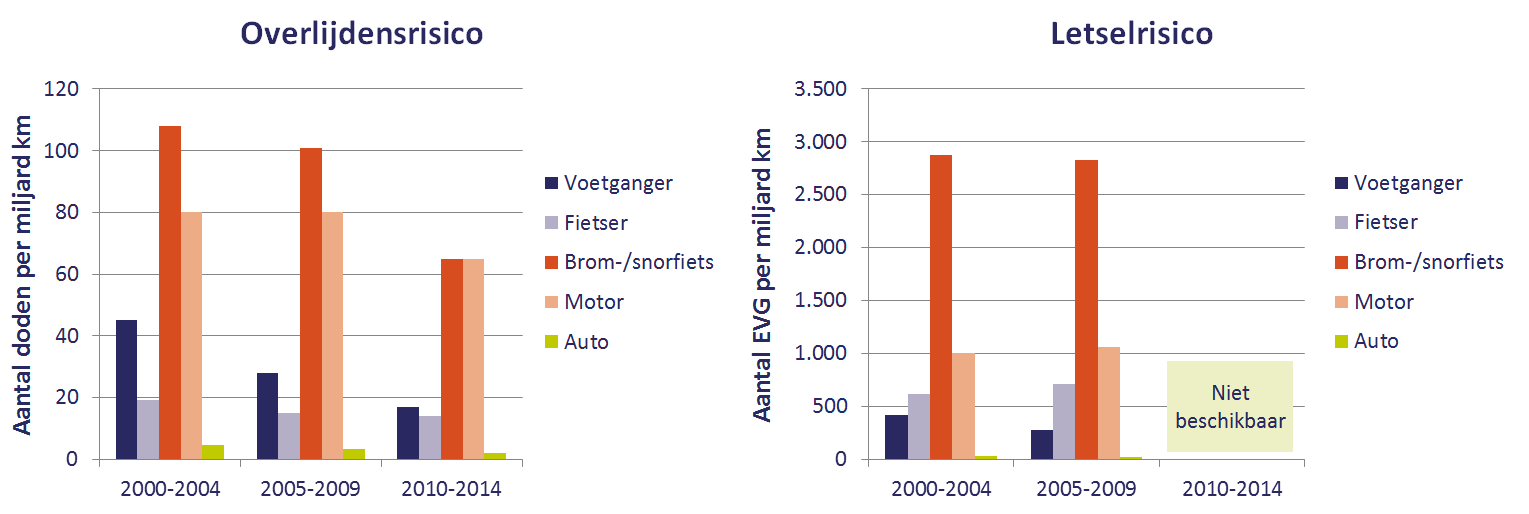
 Tabel 1. Leeftijdsverdeling van motorbezitters en omgekomen motorrijders; aantallen en aandelen per leeftijdsgroep voor het jaar 2015.
Tabel 1. Leeftijdsverdeling van motorbezitters en omgekomen motorrijders; aantallen en aandelen per leeftijdsgroep voor het jaar 2015.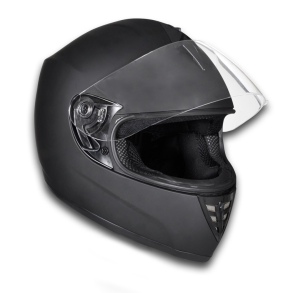
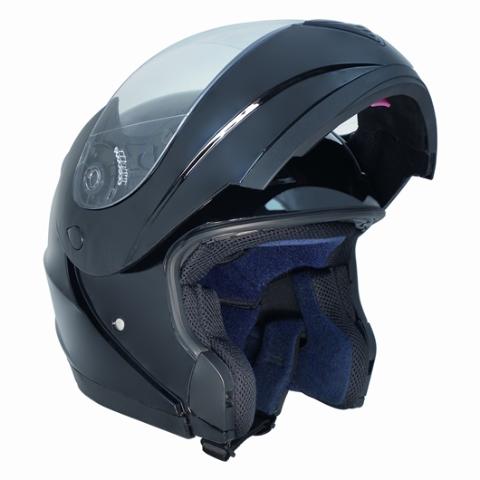
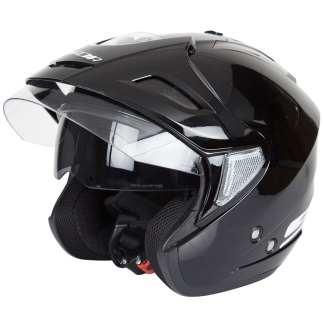 Afbeelding 4. Een integraalhelm (links), een systeemhelm (midden) en een jethelm (rechts).
Afbeelding 4. Een integraalhelm (links), een systeemhelm (midden) en een jethelm (rechts).